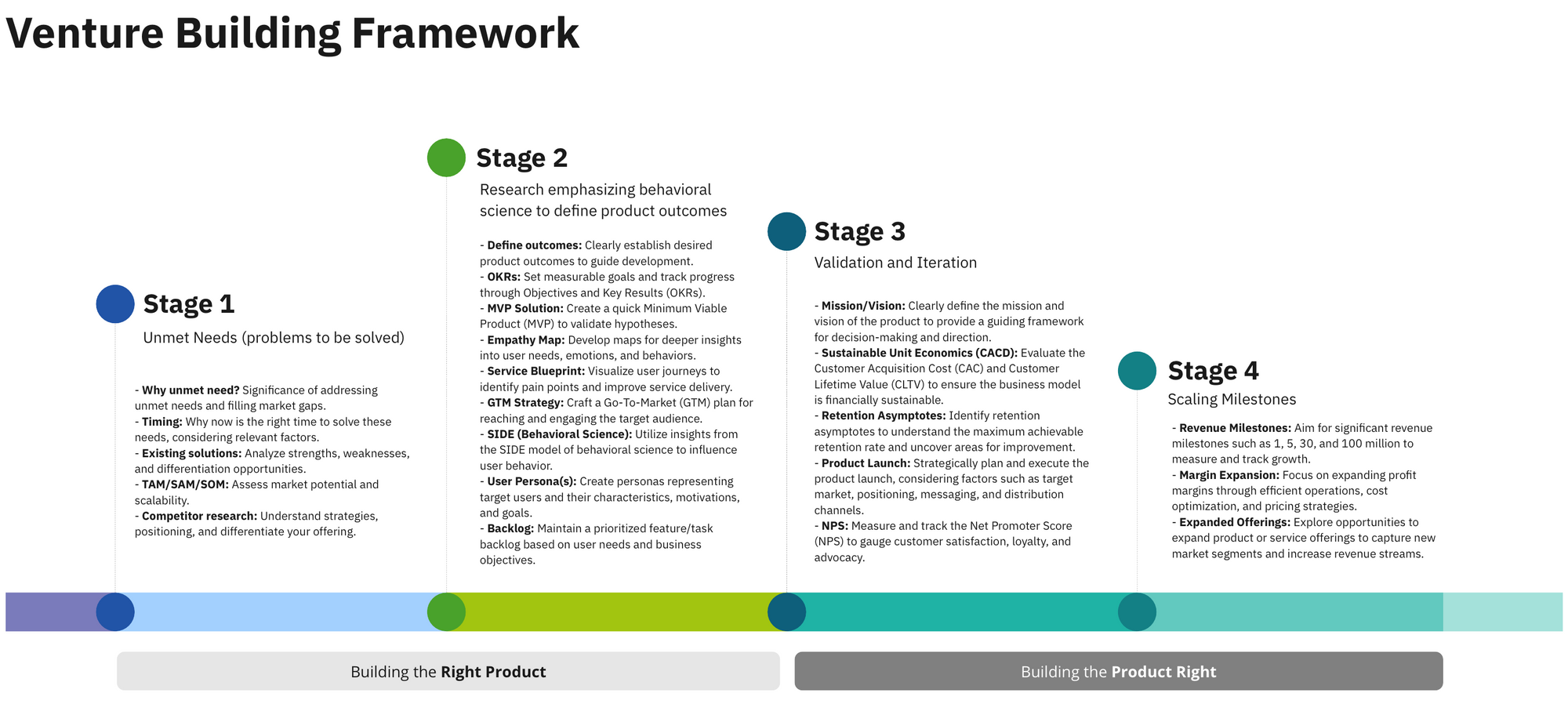

I hope this message finds you filled with enthusiasm and passion as you embark on the incredible journey of building your startup. As a venture capitalist with a background in product management and having been in your shoes as a founder myself, I understand the challenges and joys that come with creating and nurturing a successful business. In this letter, I want to share with you some essential success metrics (SM), that will serve as guideposts throughout your startup journey. These metrics are crucial for venture designing your business and ensuring a path to long-term success.
These metrics were bestowed upon me by my friend and mentor, Tim Connors.
Tim Connors | LinkedIn
Founder @ Pivot North | Founding Investor @ Platform Venture Studio | ex Partner @ Sequoia Capital
Success Metric 0: Does The Product Work?
The very first metric you must focus on is validating whether your product works. Has your vision come to life? Is your product live and functioning? More importantly, are customers able to use its basic functionality successfully? The answer to these questions is the foundation upon which your entire startup is built. To support your claims, you should have data and evidence showcasing the functionality and usability of your product.
You can read about Service Blueprints below which is a great product artifact for this stage (understanding, tracking, iterating):

Success Metric 1: Net Promoter Score (NPS)
Once your product is up and running, the next metric to focus on is customer satisfaction. Your success heavily depends on how well you address your customers' needs and preferences. NPS is a powerful tool that measures how likely your users are to refer your product or service to their friends and colleagues. It's a direct reflection of customer loyalty and satisfaction. Websites like netpromoter.com and delighted.com can be valuable resources for capturing NPS feedback.
While tracking your NPS score is essential, don't overlook the qualitative aspect of this metric. When customers answer "very likely" to the NPS question, take the opportunity to ask them why they would refer your product to others. These insights can be used to craft compelling marketing messages that resonate with your target audience. On the other hand, if users answer "very unlikely," it's essential to understand why and use this feedback to identify areas that need improvement.
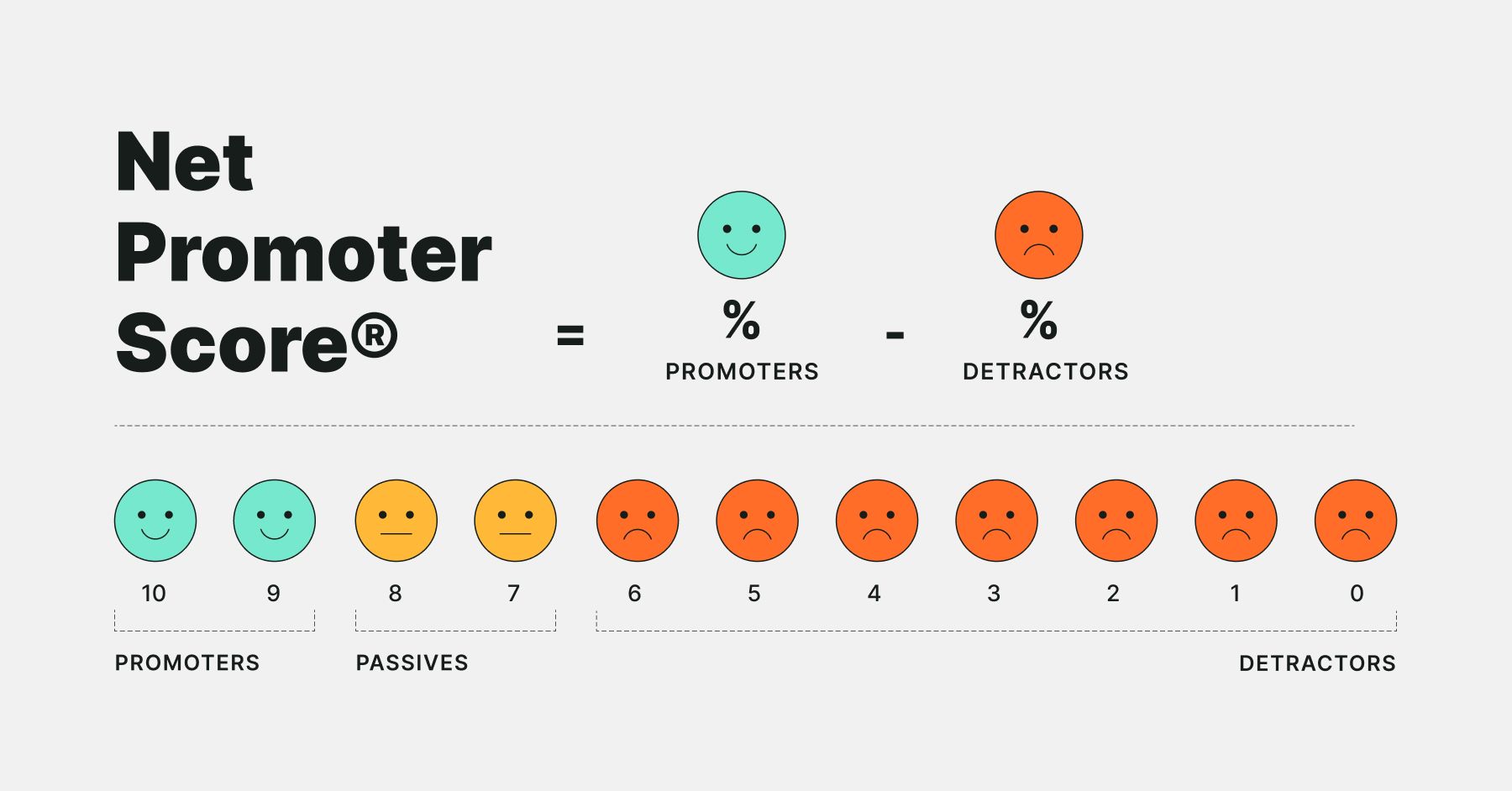
Success Metric 2: Retention Asymptote Chart
User retention is the lifeblood of any successful startup. To understand how well your product retains customers, consider using a retention asymptote chart. This chart helps you visualize the percentage of acquired users who become long-term, loyal customers over time. The higher the asymptote, the better, as it indicates that more of your users are sticking around for the long haul. Moreover, the chart's slope provides valuable insights into whether you are effectively promoting your service to the right target audience and if it resonates with users post-signup.
To create a retention asymptote chart, you can use tools like Looker.com or Google Sheet. Plot the most recent month of acquisitions in dark color on the chart, and then use progressively lighter shades for each prior month. This way, you can easily see if you are making progress, with the asymptote ideally rising and the slope becoming shallower.
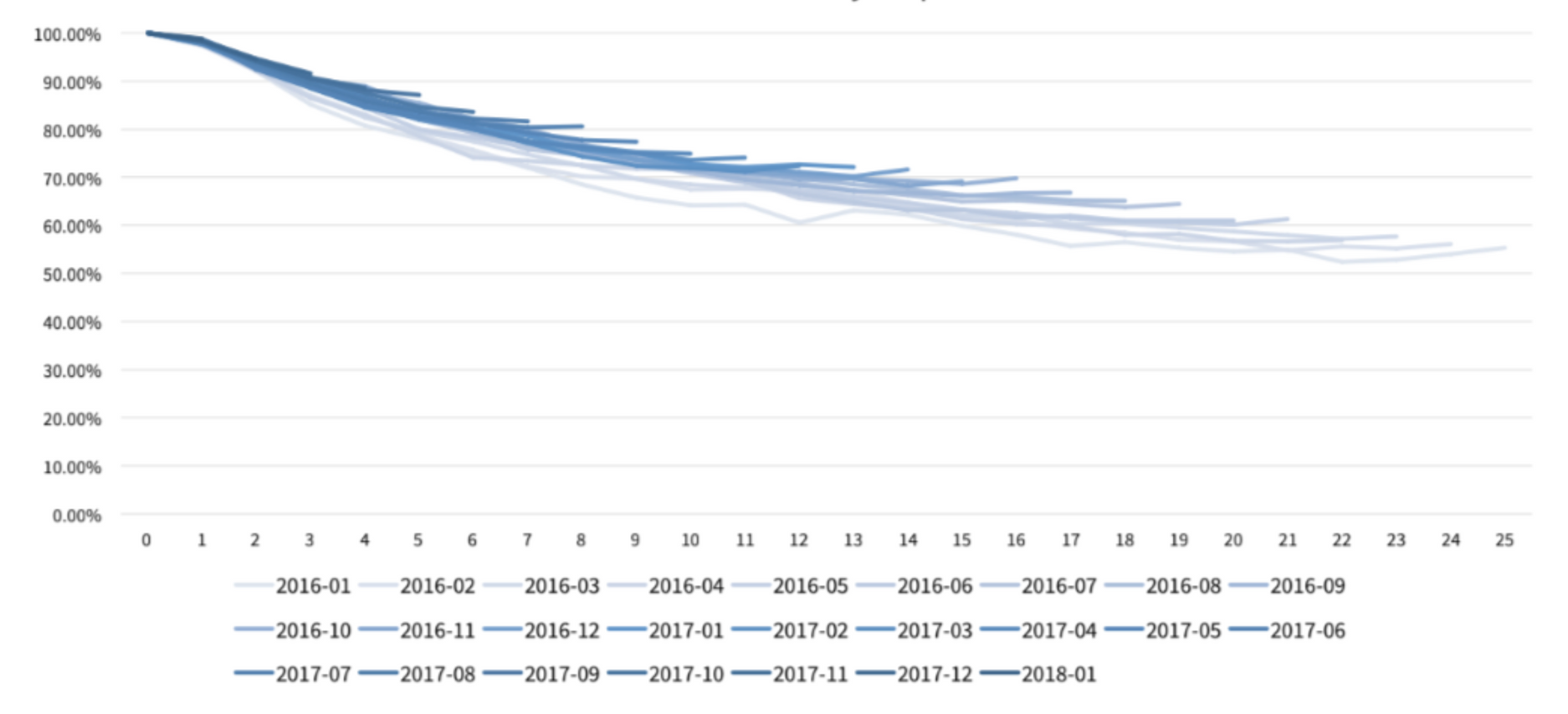
Successful startups often thrive by targeting markets where incumbents have negative NPS and inefficient business models. By continually optimizing your NPS and retention, you'll keep your customer obsession at the forefront, driving your business toward ards success.
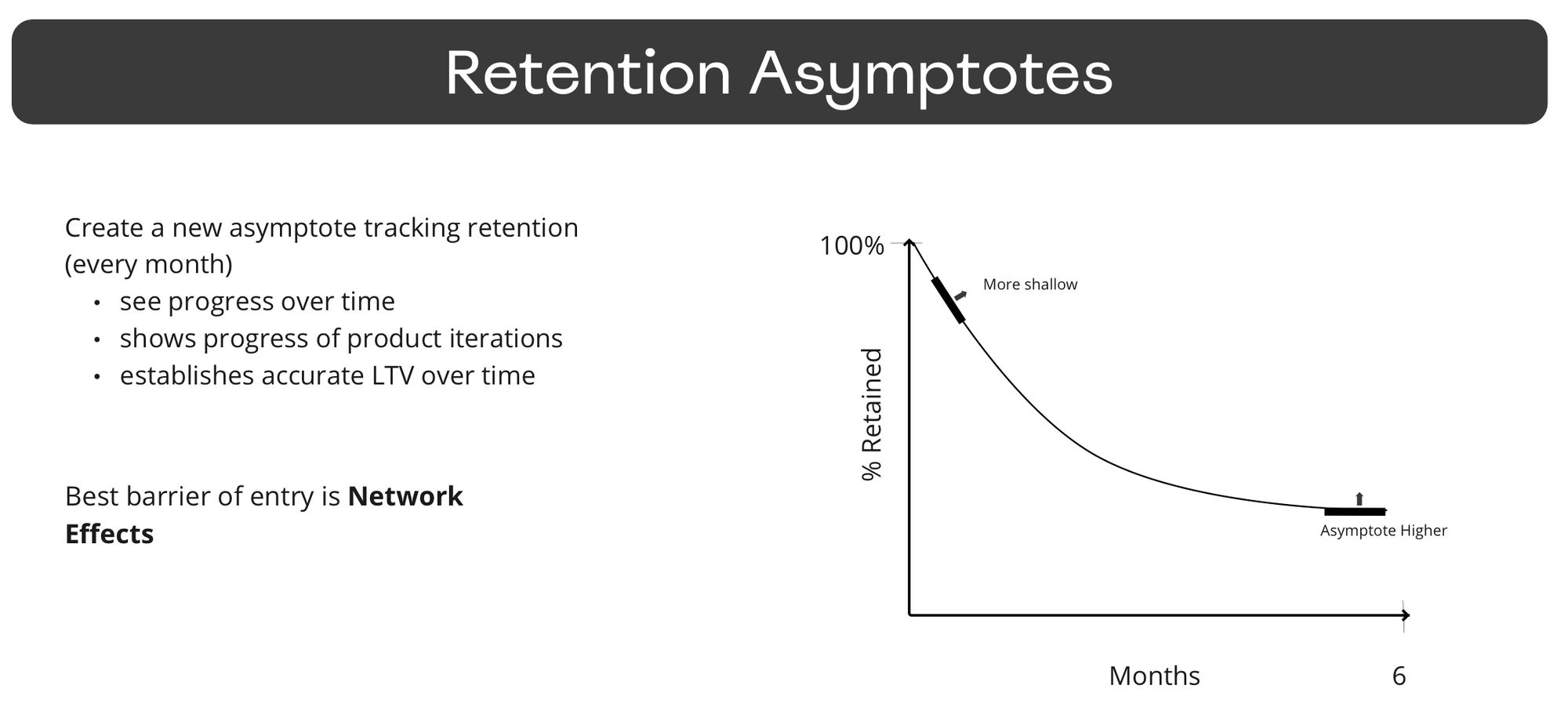
Success Metric 3: CAC Doubling Time (CACD) – Unit Economics
Perhaps one of the most critical metrics for startups is CAC Doubling Time (CACD). This metric assesses whether customers pay you significantly more than it costs to reach them. A positive CACD indicates that your business model is cost-effective and sustainable. On the other hand, a negative or overly long CACD can spell trouble for your startup's long-term viability.
For VC-backed companies, identifying a channel that is both cost-effective and scalable is crucial. Whether you are in the B2C or B2B space, it's essential to analyze your Customer Acquisition Cost (CAC) and understand how long it takes to recover twice that amount in cumulative gross margin from a customer (CACD). Additionally, compare your cumulative gross margin over the customer's lifetime (LTV) to the cost of CAC. The shorter your CAC Doubling Time and the higher your LTV to CAC ratio, the stronger your business becomes.
To give you some benchmarks, if your CACD is 8 months or less, and your LTV to CAC ratio is 5x or higher, you have a strong business model. Every month you can shave off your doubling time, the better it is for your startup's growth.
Historically, Facebook has been a game-changer for scalable and cost-effective customer acquisition, particularly for B2C companies. However, keep in mind that market dynamics can change, and what works today may not work tomorrow. Be adaptable and ready to explore new channels as needed.
For B2B companies, your primary channel is often a human sales representative team. In this case, it's crucial to analyze the unit of investment, which includes the cost of your sales team and the expected revenue they generate.
A successful sales team should sell around three times their cost in new annual recurring revenue per year. Analyze the efficiency of your sales team regularly and strive to be twice as efficient if possible.

Virality
Some startups are fortunate to have inherent virality in their products or services. This means that using the service involves inviting others into the ecosystem. A classic example of this is Venmo, where users need to invite friends who also use the platform to make the most of it.
If your startup has inherent virality, work hard to optimize it.
Calculate your K-factor, which measures how many new users each existing user invites, and how many of those invites convert into users.
Formula: K = i * c, where "i" represents the average number of download invites sent by each user, and "c" is the conversion rate of those invitations expressed as a decimal.
A K-factor greater than 1.0 indicates exponential growth without significant reliance on paid acquisition.
To optimize the viral loop, map out each step of your service or app, and identify the call to action that drives conversion to the next page or step. Ensure that the viral loop is end-to-end closed and track each step while looking for bottlenecks. Use A/B testing to remove these bottlenecks and improve the viral loop's efficiency.

Increasing the virality of your product is a powerful long-term strategy, rooted in delivering an exceptional customer experience and ensuring users find value in your app. Satisfied customers become your brand's best advocates, driving organic downloads and growth. Keep in mind that while successful apps may have a growing user base, their K-factors may not always be easily trackable.
For short-term virality improvement, consider implementing these strategies:
- Reciprocal Incentives: Empower users to offer discounts to friends and reward them for referrals. Higher incentives lead to more referrals and better conversion rates, making it a cost-effective approach compared to acquiring users through paid channels.
- Leverage Your Loyalty Program: Engage members of your loyalty program to recommend your app. Simplify the referral process for them and reward them with loyalty program incentives to encourage more referrals.
- Focus on Your Best Channels: Identify influential users who can have a significant impact on spreading your app's popularity. Tailor timely and appealing incentives for these potential influencers to encourage word-of-mouth marketing.
By combining these short-term strategies with a relentless focus on customer satisfaction, your app's virality will grow over time, setting the stage for long-term success.
Timelines
As you work towards optimizing these Success Metrics, it's essential to understand that building a successful startup takes time and effort. Plan for approximately six months of scientific, weekly A/B testing iterations to fine-tune your CAC Doubling Time and viral loop. Use a data-driven approach to assess the results and learn from both successes and failures.
Within these six months, you should be able to determine whether you have a cost-effective and scalable channel. If your efforts yield positive results, and you achieve product/market/channel fit, you'll find yourself in a strong position to attract investment.
Success Metric 4: Scaling Working Unit Economics
Once you have achieved product/market/channel fit and successfully optimized the previous metrics, it's time to focus on scaling your working unit economics. This process involves gradually increasing your ARR (Annual Recurring Revenue) from $1M to $5M, $30M, and ultimately, $100M. Scaling your business in this way ensures that you grow in a sustainable manner, avoiding unnecessary risks.
Incorporating the Success Metrics you'll lay a solid foundation for your startup's success. Embrace a data-driven approach, actively listen to your customers, and be ready to adapt to market changes. Remember, businesses are not build from an ivory tower (and frankly neither should good VC investing). Building a startup is no easy feat, but with determination, passion, and a commitment to excellence, you can create a thriving and impactful company.
Remember, you are not alone in this journey. Seek advice from mentors, fellow founders, and investors, and be open to learning from their experiences. Together, we can create a vibrant startup ecosystem that drives innovation and positively impacts the world.
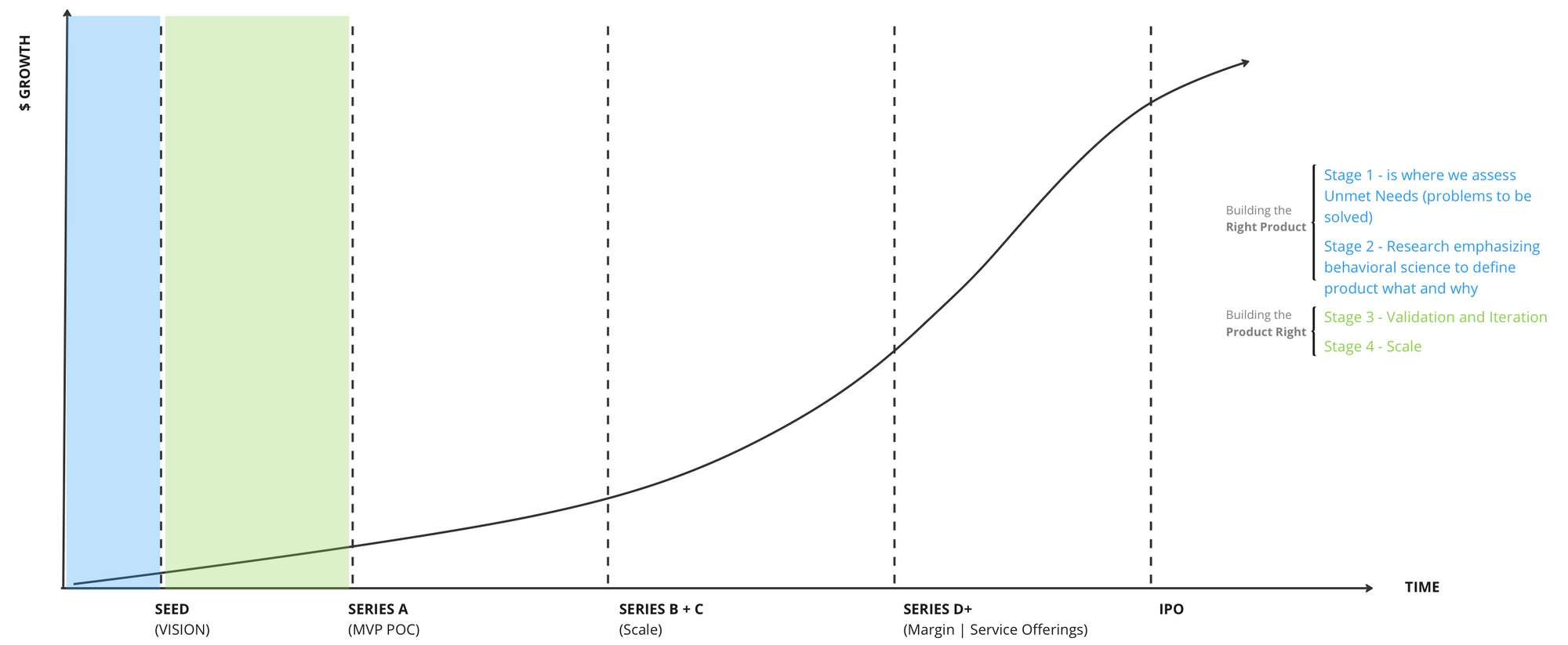
This artifact is part of Stage 3 of the Venture Buildinag Framework.
This is a powerful output as you work to ensure you are Building the Product Right.
